What is Coin Grading?
Have you ever wondered what the term XF45 or MS64DPL stand for? While most people understand that a coin in a plastic coin holder (or “slab”) has been assessed a grade, there are some nuances, details and even history that those same people probably don’t know about. So let’s get started.
With the advent of coin collecting, so came the process of coin grading. Once an item becomes collectable, the value is almost always partially tied to its condition. Early on, there were only two grades, new and used. Over time the grading system has become finer and finer allowing for a more precise condition to be assessed.
This eventually evolved into the letter grading system that is widely recognizable today. Beginning with the lowest grade, they are as follows:
Basal State or Poor (PO)
Fair (Fr)
About or Almost Good (AG)
Good (G)
Very Good (VG)
Fine (F)
Very Fine (VF)
Extremely Fine (EF)
Almost or About Uncirculated (AU)
Uncirculated (Unc)
Brilliant Uncirculated or Gem Uncirculated (BU)
As the coin collector market grew, there became a need for a more precise, standardized grading system. Some coins were just nicer than others and the term “uncirculated” ended up covering a wide range of coins – some had more luster, some had bag marks, but they were still all considered “uncirculated.”
In 1948, a numismatist by the name of Dr. William Herbert Sheldon decided to create a standardized coin grading system known today as the Sheldon Scale. This is the coin scale that is prevalent throughout the numismatic community.
In his book Penny Whimsy, William H. Sheldon is credited with creating the Sheldon Scale, a numeric system that spanned 1-70. Sheldon based his system off the relative value of a 1794 Large Cent as its example. In Basal State, the large cent was worth $1 dollar and in perfect Uncirculated condition it was worth $70 dollars. With this specimen it was much easier to assess grade and value in whole numbers from a heavily worn, scarred, oxidized and bent coin (1) all the way to perfect coin (70).
THE INTRODUCTION OF PRIVATE GRADING SERVICES
In 1984 the Numismatic Certification Institute (NCI) was launched and became the first privately owned grading service (created by Heritage Rare Coin Galleries). Their intent wasn’t to grade coins like we know of today. Instead, their first product was an instruction manual called the NCI Grading Guide, which was later renamed How to Grade U.S. Coins. This manual, by James L. Halperin was meant to guide numismatists on how to grade their mint state as well as proof U.S. Coins.
The current grading standard that we use today was created in 1986 with the incorporation of PCGS (Professional Coin Grading Service). The system combines letters which denote the adjective (such as “XF” for Extra-Fine or “VG” for Very Good) as well as corresponding numbers from 1-70. The result is the following grade scale:
| # | Grade | Grade Code | Design Remaining |
|---|---|---|---|
| 1 | Poor | PO1 | – 10% |
| 2 | Fair | FR2 | – 10% |
| 3 | About Good, Almost Good | AG3 | – 10% |
| 4 | Good | G4 | 10% |
| 6 | Choice Good | G6 | 10% |
| 8 | Very Good | VG8 | 25% |
| 10 | Choice Very Good | VG10 | 25% |
| 12 | Fine | F12 | 50% |
| 15 | Choice Fine | F15 | 50% |
| 20 | Very Fine | VF20 | 75% |
| 25 | Very Fine | VF25 | 75% |
| 30 | Choice Very Fine | VF30 | 75% |
| 35 | Choice Very Fine | VF35 | 75% |
| 40 | Extremely Fine, Extra Fine | XF40 | 90% |
| 45 | Choice Extra Fine | XF45 | 90% |
| 50 | About Uncirculated, Almost Uncirculated | AU50 | 95% + some luster |
| 55 | Choice Almost Uncirculated | AU55 | 95% + some luster |
| 58 | Choice Almost Uncirculated | AU58 | 95% + some luster |
| 60 | Mint State | MS60 | 100% + luster |
| 61 | Mint State | MS61 | 100% + luster |
| 62 | Mint State | MS62 | 100% + luster |
| 63 | Mint State | MS63 | 100% + luster |
| 64 | Mint State | MS64 | 100% + luster |
| 65 | Mint State | MS65 | 100% + luster |
| 66 | Mint State | MS66 | 100% + full luster |
| 67 | Mint State | MS67 | 100% + full luster |
| 68 | Mint State | MS68 | 100% + full luster |
| 69 | Mint State | MS69 | 100% + full luster |
| 70 | Mint State | MS70 | 100% + full luster |
HOW MANY COIN GRADING SERVICES ARE THERE?
Currently, there are mainly two coin grading services that we recommend: Professional Coin Grading Service (PCGS) and Numismatic Guaranty Corporation (NGC). While there are other companies out there such as ANACS, and ICG, you would be better served sticking with the first two. Since PCGS was the first commercial coin grading company, they were the gold standard for decades. However, NGC has been making great strides by cutting into their market share mainly because they have a more modern looking coin holder.
(Left: PCGS graded coin with “Black Diamond” Label. Right: NGC graded coin with “Early Release” Label.)
In the past 3 years we’ve seen the popularity of NGC-graded coins rise and we may even be on the cusp of NGC overtaking PCGS as the number 1 graded coin service.
GRADED COIN NUANCES
ANACS and ICG
One problem that may have hurt ANACS and ICG was their looser grading standards. It was known throughout the industry that if a coin was sent to both PCGS and ANACS, the ANACS coin would come back in a higher grade than the PCGS. While this makes the owner of the coin excited, it invalidates the authority of a particular grading service. In this instance, ANACS and ICG coins that had high grades were tainted in the eyes of seasoned numismatists.
PCGS RATTLERS
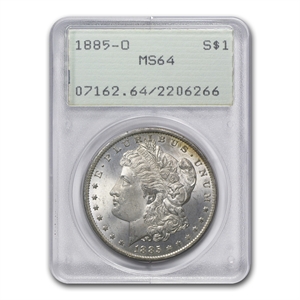 On the flip side, older PCGS graded coins are known for being stricter than current standards. For example, a coin graded MS64 in a PCGS Rattler Case (this is the terminology for older PCGS holders because the coin sometimes is slightly loose in the case which causes it to rattle around) would possibly receive an MS65 grade today. In fact, there are accounts of collectors purchasing coins in these Rattler Cases, cracking the coins out and resubmitting them for grading. Often times the coins come back at a higher grade than the originals. This is due to the strict grading standards PCGS employed early on.
On the flip side, older PCGS graded coins are known for being stricter than current standards. For example, a coin graded MS64 in a PCGS Rattler Case (this is the terminology for older PCGS holders because the coin sometimes is slightly loose in the case which causes it to rattle around) would possibly receive an MS65 grade today. In fact, there are accounts of collectors purchasing coins in these Rattler Cases, cracking the coins out and resubmitting them for grading. Often times the coins come back at a higher grade than the originals. This is due to the strict grading standards PCGS employed early on.
GRADING ANNOTATIONS
Along with the standard grade, grading services added annotations to denote certain features of a coin. For example:
FB – Full Bands. Used for Mercury and Roosevelt Dimes to highlight the bands on the reverse of the coin.
FSB – Fully Split Bands. Same as above.
FBL – Full Bell Lines. Used for Franklin Half Dollars to highlight the edge of the Liberty Bell on the reverse.
On Proof Coins the depth of the mirrors are also annotated with the terms, Cameo, Deep Cameo, Ultra Cameo. Uncirculated coins can also carry annotations when they are deemed proof like, PL (Proof-like), and DPL (Deep Mirror Proof-like).
In 2013, both PCGS and NGC implemented a “+” designation to coins. This means a coin graded MS64+ is at the upper-threshold of a 64.
NGC has also implemented a star designation to their coins. The star is meant to designate exceptional eye appeal and is usually used in cases of excellent luster, strike or toning.
(Left: Toned Morgan Silver Dollar with “star” annotation)
Online Photoguide
An excellent new resource released by PCGS is their Online Photograde (http://www.pcgs.com/photograde/). Here you can browse through specific coins and PCGS has images for each grade of that specific coin. Although it is far from a professional grade for your coin, by browsing through there you can get an idea of what a coin in a specific grade should look like.







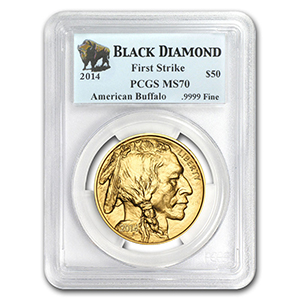
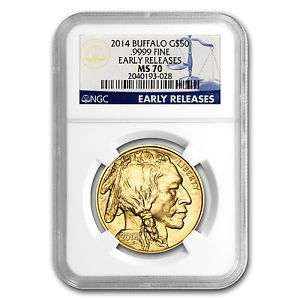
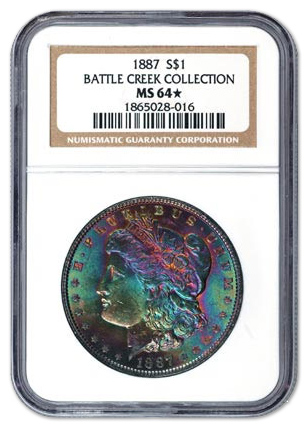






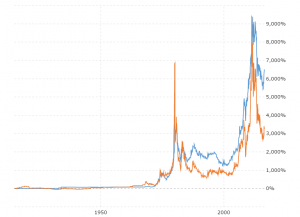



ChrisB: thank you for the fine research o put into his articles which shakes the history into a fixed chronology. It’s too bad that as soon as a new refinement comes out , there are dealers out there who start tinkering with it to squeeze collectors for more money. Still, you pursuit of thes factual research is a benefit to all and is to be commended, as I will do from here on out. Thanks very much.
AnthonyV
For sale 1834 one dollar silver coin, how much it is…